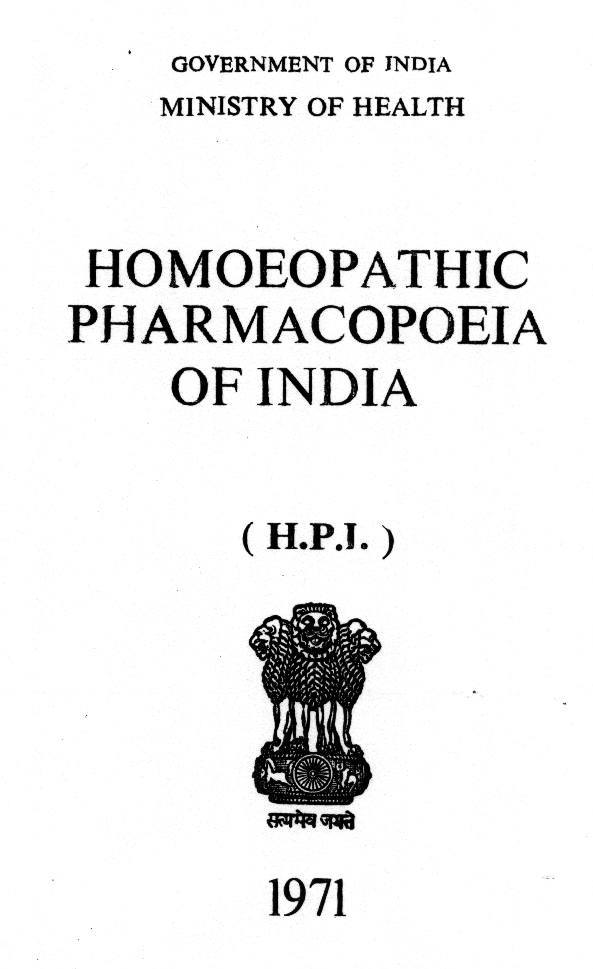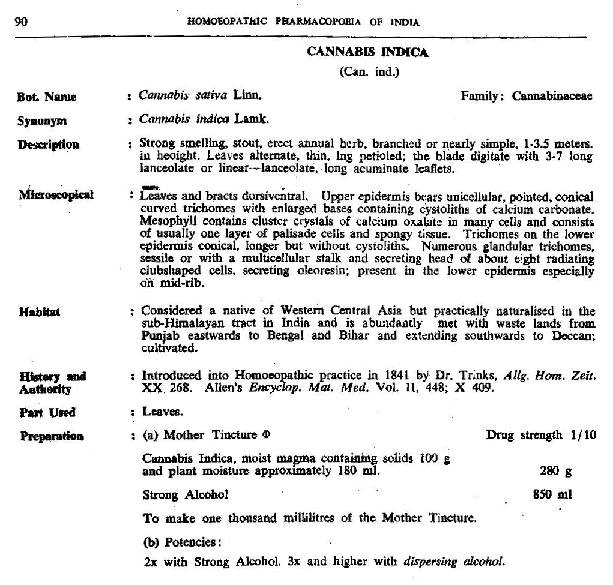INDIAN MEDICINE
 INDIAN MEDICINE: --
Both England as well as the U.S. removed Cannabis from their official pharmacopoeia's during the reefer madness era.[6] [7] Thus it is felt by many that political NOT medical logic was in used.
INDIAN MEDICINE: --
Both England as well as the U.S. removed Cannabis from their official pharmacopoeia's during the reefer madness era.[6] [7] Thus it is felt by many that political NOT medical logic was in used.
However, NOT ALL countries and National Pharmacopeia's did so. One of the best examples is India, where the medical properties of Cannabis had been established and in use for millennia's. There all pharmaceutical students, to this very day, are still taught how to properly dispense it.


According to [The Non-Governmental] The Indian Materia Medica[8], in 1941 Cannabis was recommended for treating the following ailments:
Uses.--- are prescribed by Hakims and Vaidyas in bowel complaints and recommended as apetisers, as nervous stimulants and as a source of great staying-power under severe exertion or fatigue. Leaves make a good snuff for deterging the brain ; their juice applied to the head removes dandruff and vermin ; dropped into the ear it allays pain and destroys worms ; it checks the discharge in diarrhea and gonorrhea. Powder of the leaves applied to fresh wounds promotes granulation ; a poultice of the plant is applied to local inflammations, erysipelas, neuralgia, hemorrhoids, etc., as an anodyne or sedative. The dose of the leaves is 40 grains internally. Externally, a poultice of the fresh bruised leaves is useful in affections of the eye with photophobia ; also applied to relieve pain and swelling in orchitis. The concentrated resin exudate (resinous matter) extracted from the leaves and flowering tops or agglutinated spikes of C. sativa, and known as nasha or charas which form the active principle when collected separately, is used to produce sleep in cases of sleeplessness, in which opium is contraindicated ; it is valuable in preventing and curing sick-headaches, neuralgias, migraine (malarial and periodical), valuable in acute mania, whooping cough, asthma, dysuria and in relieving pain in dysmenorrheal and menorrhagia and pain of the last stages of phthisis ; it increases appetite. It does not produce loss of appetite or constipation like opium. For asthma and tetanus the dose of the extract is from 1/4 to 2 grains ; the leaves powdered, mixed with sugar and well fried in ghee and with black pepper added are administered in chronic diarrhea ; with poppy seeds the extract is given in dysentery ; with asafoetida it is given in hysteria. In cases of chronic colic wonderful effect is produced by the administration of 1 grain of the extract in combination with 1/4 grain of ipecacuanha. In dysentery about half a drachm of dried tender leaves mixed with a little sugar and black pepper powder is a well-known and successful remedy ; the tincture of the British Pharmacopoeia is also used in 15 to 20 minim doses three time a day especially in acute dysentery ; combined with belladonna it is given in whooping cough, infantile convulsions, hepatic and renal colic, tetanus and hydrophobia. Oil extracted from the seeds is used for rubbing in rheumatism. Paste applied to the head relieves dandruff and vermin. . . [and more]Small wonder then that many "present day" Cannabis pharmaceutical products have a strong Indian connection of some kind or another. In India, news-items such as the one below are not uncommon:
GERMAN PHARMACEUTICAL CO. TO DO AIDS RESEARCH IN INDIA
A German pharmaceutical Co., Von-Hoffmeister Pharmaceutical's, is attempting to set up a joint venture to carry out medical research here in India on AIDS therapy.
Speaking with reporters, Mr K. Ramanathan, R&D Management Analyst at Von-Hoffmeister Pharmaceuticals , said that the Cannabis has been in medical use in India for a long, long time.
According to him, although extremely well documented in literature the Medical Cannabis was abruptly brought to an end, with the Marijuana Tax Act passed in the US in 1937, banned the use of the plant parts for any medication or industry. This not only killed the plants medical uses, but also much research into the use of cannabis in medicine.[9]
FOOTNOTES:
[6] A Pharmacopoeia is a list of officially recognized medicines and pharmaceuticals, usually complied by a pharmaceutical organization under governmental auspices.
[7] See Chapter 17.
[8] INDIAN MATERIA MEDICA by Dr. K.M. Nadkarni 3d Ed. 1941 publ. Popular Book Depot
[9] Due to copyright laws, the museum was not able to use the original article, so we re-wrote it [sneaky way to get around copyright laws], the original came from The Hindu Business Line - July 3 2002
WANT TO KNOW MORE:
=====================
Due to space / download time considerations, only selected materials are displayed. If you would like to obtain more information, feel free to contact the museum. All our material is available (at cost) on CD-Rom format.
 BACK TO CHAPTER 20 |